+86 20 66624151



NEWS
Tel:(+86)-20-66624151
Phone:(+86)13535581525
Fax:(+86)-20-66601688-896
Email:market@elevatorshoesfactory.com




CONTACT US


Development trends of the major footwear markets in the US and Europe (UK, France, Germany).
Source:Internet
|
Author:Jatill
|
Published time: 2019-10-24
|
2057 Views
|
Share:
The trend of the footwear market in Europe and the United States is similar to that of the apparel market. Currently, it is mainly based on sports goods. Therefore, the trend of sports and healthy winds should be maintained until 2019 or even 2020.
The trend of the footwear market in Europe and the United States is similar to that of the apparel market. Currently, it is mainly based on sports goods. Therefore, the trend of sports and healthy winds should be maintained until 2017 or even 2018.
Sports and leisure wind (Athleisure)
With the prevalence of sports and leisure, consumers have begun to become interested in the design of sporty footwear products, so that more and more sports and leisure footwear products have emerged, which has promoted the entire footwear industry. Sales. The chart below shows the growth in footwear sales in the United States, France and the United Kingdom in 2016.

United Kingdom: In 2016, sales of all types of footwear in the UK increased by 6.2% year-on-year to US$14.4 billion. Although the growth rate is much higher than the sales of clothing products, it is the lowest growth rate in the past three years.
United States: Total sales of footwear in the United States increased by 2.8% in 2016 to reach $76.6 billion.
According to research by research firm Mintel, compared to high heels, British female consumers are more inclined to buy training sneakers. The proportion of women who buy high heels and those who buy sneakers are 33% and 37% respectively.
Below we look at the market share of these brands in different countries according to different sports shoes brands:
United States
Nike is not allowed to occupy 17.9% of the US footwear market, and other brands such as Sketchers, Payless ShoeSource, Adidas, Timberland, New Balance, etc. have almost no market share.

France
Vivarte has the highest market share in the French footwear market, reaching 11%. Nike and Adidas are only 7% respectively. However, the growth rate of the two brands in the French market in 2016 reached a record high.
Germany
German local brand Deichmann has achieved the highest market share in the country, reaching 13.1%. Nike followed closely, with a market share of 5.7%, while Adidas ranked fourth with 5.0%.
In addition to market share, the total sales of these multinational footwear manufacturers have also grown by leaps:
Nike: In 2016, global footwear product revenue increased by 15% year-on-year.
Puma: Total sales of footwear products increased by 12.6% year-on-year in 2016.
Adidas: According to company CEO Kasper Rorsted, Adidas' total footwear sales in the first quarter of 17 remained strong.
JD Sports Fashion: British sports fashion and outdoor products retailer JD Sports Fashion's total revenue in 2016 rose by 31%, with footwear being the highest growth segment.
Smart sports shoes
This is the vent of a new sneaker, and big footwear manufacturers are paying attention to this new branch of the future:
Under Armour: UA first launched its first pair of smart sneakers in February 2017. Sneakers themselves can help monitor individual exercise data, including muscle fatigue. UA plans to launch a variety of smart shoes in the next 1-2 years, ranging in price from $140-160.
Nike: Nike recently retired an automatic lace-up smart shoe that provides the most comfortable lace tension based on the results of pressure sensor monitoring.
3D printing
Major shoe factories, including Nike, UA, and New Balance, are working on custom-made shoes. And 3D printing can efficiently complete personalized customization services. DSW even opened a flash shop to showcase the latest 3D printed custom shoes from Feetz.
In general, from the initial concept to the final product, a shoe usually takes 9-18 months to produce, and 3D printing technology can help shorten the entire process to 3-6 months.
Adidas has built its own 3D printing factory "SpeedFactories" in Germany and Atlanta, USA. Although the company does not say how much 3D printed shoes are sold, at least Adidas will position 3D printed shoes as "high-end" products. The company hopes to ship 5,000 pairs of 3D printed shoes by the end of 2017 and 100,000 pairs by 2018.
Nike has no specific plan, just saying that one day 3D printed shoes will be sold in the store.
E-commerce
Online sales of footwear products are also growing rapidly. Online penetration in the UK has the highest penetration rate of 27%.

Amazon
According to a survey by Feng's global retail technology, most respondents in the United States said they most often go to Amazon to buy shoes.
 Amazon has the highest penetration rate in millennials, and a quarter of people have bought things on Amazon in the last 90 days. The other US Super 100 Target has become the favorite of millennials. Other established retailers have become favorites of consumers of other ages.
Amazon has the highest penetration rate in millennials, and a quarter of people have bought things on Amazon in the last 90 days. The other US Super 100 Target has become the favorite of millennials. Other established retailers have become favorites of consumers of other ages.
Amazon's other big moves
Amazon launched its own line of footwear products, such as the men's shoe brand Franklin & Freeman
In 2015, it acquired a 3D printing startup called Shoefitr, which focuses on the fit of footwear.
Amazon Fashion announced the launch of its footwear page on its Indian platform, which has more than 2,500 footwear brands.
Nowadays, the “brand strategy” has risen to the highest level and has become the core and focus of the world economic competition. As a carrier of development, “Brand” has become a “strategic hand” for participating in international market competition, from the establishment of “China Brand Day”, the proposal of “One Belt and One Road” initiative, the promotion of “National Brand Plan”, and the construction of “Human The call for the community of destiny, the global powers are gradually being introduced into the "development" track.
Sports and leisure wind (Athleisure)
With the prevalence of sports and leisure, consumers have begun to become interested in the design of sporty footwear products, so that more and more sports and leisure footwear products have emerged, which has promoted the entire footwear industry. Sales. The chart below shows the growth in footwear sales in the United States, France and the United Kingdom in 2016.

United Kingdom: In 2016, sales of all types of footwear in the UK increased by 6.2% year-on-year to US$14.4 billion. Although the growth rate is much higher than the sales of clothing products, it is the lowest growth rate in the past three years.
United States: Total sales of footwear in the United States increased by 2.8% in 2016 to reach $76.6 billion.
According to research by research firm Mintel, compared to high heels, British female consumers are more inclined to buy training sneakers. The proportion of women who buy high heels and those who buy sneakers are 33% and 37% respectively.
Below we look at the market share of these brands in different countries according to different sports shoes brands:
United States
Nike is not allowed to occupy 17.9% of the US footwear market, and other brands such as Sketchers, Payless ShoeSource, Adidas, Timberland, New Balance, etc. have almost no market share.

France
Vivarte has the highest market share in the French footwear market, reaching 11%. Nike and Adidas are only 7% respectively. However, the growth rate of the two brands in the French market in 2016 reached a record high.
Germany
German local brand Deichmann has achieved the highest market share in the country, reaching 13.1%. Nike followed closely, with a market share of 5.7%, while Adidas ranked fourth with 5.0%.
In addition to market share, the total sales of these multinational footwear manufacturers have also grown by leaps:
Nike: In 2016, global footwear product revenue increased by 15% year-on-year.
Puma: Total sales of footwear products increased by 12.6% year-on-year in 2016.
Adidas: According to company CEO Kasper Rorsted, Adidas' total footwear sales in the first quarter of 17 remained strong.
JD Sports Fashion: British sports fashion and outdoor products retailer JD Sports Fashion's total revenue in 2016 rose by 31%, with footwear being the highest growth segment.
Smart sports shoes
This is the vent of a new sneaker, and big footwear manufacturers are paying attention to this new branch of the future:
Under Armour: UA first launched its first pair of smart sneakers in February 2017. Sneakers themselves can help monitor individual exercise data, including muscle fatigue. UA plans to launch a variety of smart shoes in the next 1-2 years, ranging in price from $140-160.
Nike: Nike recently retired an automatic lace-up smart shoe that provides the most comfortable lace tension based on the results of pressure sensor monitoring.
3D printing
Major shoe factories, including Nike, UA, and New Balance, are working on custom-made shoes. And 3D printing can efficiently complete personalized customization services. DSW even opened a flash shop to showcase the latest 3D printed custom shoes from Feetz.
In general, from the initial concept to the final product, a shoe usually takes 9-18 months to produce, and 3D printing technology can help shorten the entire process to 3-6 months.
Adidas has built its own 3D printing factory "SpeedFactories" in Germany and Atlanta, USA. Although the company does not say how much 3D printed shoes are sold, at least Adidas will position 3D printed shoes as "high-end" products. The company hopes to ship 5,000 pairs of 3D printed shoes by the end of 2017 and 100,000 pairs by 2018.
Nike has no specific plan, just saying that one day 3D printed shoes will be sold in the store.
E-commerce
Online sales of footwear products are also growing rapidly. Online penetration in the UK has the highest penetration rate of 27%.

Amazon
According to a survey by Feng's global retail technology, most respondents in the United States said they most often go to Amazon to buy shoes.

Amazon's other big moves
Amazon launched its own line of footwear products, such as the men's shoe brand Franklin & Freeman
In 2015, it acquired a 3D printing startup called Shoefitr, which focuses on the fit of footwear.
Amazon Fashion announced the launch of its footwear page on its Indian platform, which has more than 2,500 footwear brands.
Nowadays, the “brand strategy” has risen to the highest level and has become the core and focus of the world economic competition. As a carrier of development, “Brand” has become a “strategic hand” for participating in international market competition, from the establishment of “China Brand Day”, the proposal of “One Belt and One Road” initiative, the promotion of “National Brand Plan”, and the construction of “Human The call for the community of destiny, the global powers are gradually being introduced into the "development" track.
© 1996-2023 Guangzhou Changfeng Shoes Co., Ltd.
Best Elevator Shoe Manufacturer - All Rights Reserved.
Contact with us on social media:


contact us
Telephone: (+86)-20-66624151
fax: (+86)-20-66601688-896
cell phone: (+86)13535581525
(+86)19866166051
e-mail: market@elevatorshoesfactory.com





